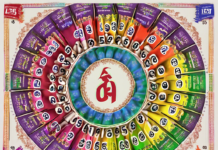Introduction
Tattoos have long been a form of expression, representing everything from personal beliefs to cultural heritage. In the popular series “The Tattooist of Auschwitz,” viewers are taken on a poignant journey through the lives of individuals whose stories are etched into their skin. The series delves into the harrowing experiences of those who were imprisoned in Auschwitz during World War II, highlighting the resilience and strength of the human spirit in the face of unimaginable adversity. In this blog post, we will explore some key insights from the series, shedding light on the themes, characters, and messages that resonate throughout the episodes.
Themes in “The Tattooist of Auschwitz”
One of the central themes in “The Tattooist of Auschwitz” is survival. The series portrays the indomitable will of individuals to survive in the most dire circumstances, showcasing their ability to find hope and humanity amidst unimaginable horror. Through the character of Lale Sokolov, the tattooist of Auschwitz, viewers witness the power of the human spirit to endure even in the darkest of times.
Another prominent theme in the series is love. Despite the brutality of the concentration camp, Lale finds love in the most unlikely of places. His relationship with Gita, a fellow prisoner, serves as a beacon of light in a place consumed by darkness. Their love story is a testament to the enduring power of love, even in the face of overwhelming despair.
Character Analysis
Lale Sokolov, the protagonist of “The Tattooist of Auschwitz,” is a complex and compelling character. As the tattooist of the camp, Lale is tasked with permanently marking his fellow prisoners with identification numbers. Despite the horrors he witnesses on a daily basis, Lale remains determined to survive and find moments of joy amid the chaos. His resilience and compassion set him apart, making him a symbol of hope for those around him.
Gita is another central character in the series, known for her strength and resilience. As a prisoner in Auschwitz, Gita faces unimaginable hardships, yet she never loses her will to survive. Her love story with Lale serves as a powerful narrative thread throughout the series, highlighting the profound impact of love in even the most dire circumstances.
Messages and Takeaways
At its core, “The Tattooist of Auschwitz” is a story of resilience, hope, and humanity. The series serves as a stark reminder of the atrocities of the Holocaust while also celebrating the indomitable spirit of individuals who refuse to be broken. Through Lale and Gita’s journey, viewers are reminded of the importance of empathy, love, and perseverance in the face of adversity.
The series also challenges viewers to confront the darker aspects of human nature, urging us to reflect on the consequences of intolerance, hatred, and indifference. By shining a spotlight on the horrors of the past, “The Tattooist of Auschwitz” encourages us to learn from history and strive for a more compassionate and inclusive future.
Frequently Asked Questions (FAQs)
-
Is “The Tattooist of Auschwitz” based on a true story?
Yes, “The Tattooist of Auschwitz” is based on the true story of Lale Sokolov, a Jewish prisoner who served as the tattooist of Auschwitz during World War II. -
How accurate is the portrayal of life in Auschwitz in the series?
The series strives to accurately depict the horrors of life in Auschwitz, drawing from historical records and firsthand accounts to recreate the experiences of those who were imprisoned in the camp. -
What makes “The Tattooist of Auschwitz” a compelling watch?
The series offers a moving portrayal of resilience, love, and humanity in the face of unimaginable adversity, making it a poignant and thought-provoking viewing experience. -
Are there any trigger warnings for sensitive viewers?
Given the subject matter, “The Tattooist of Auschwitz” contains scenes of violence, trauma, and suffering that may be distressing for some viewers. Viewer discretion is advised. -
What are some key themes explored in “The Tattooist of Auschwitz”?
Themes of survival, love, resilience, and hope are central to the narrative of “The Tattooist of Auschwitz,” offering viewers a nuanced exploration of the human experience during times of crisis. -
Is there a historical significance to the tattoos in Auschwitz?
The tattoos given to prisoners in Auschwitz served as a form of identification, dehumanizing individuals and reducing them to mere numbers in the eyes of the Nazis. The practice symbolizes the dehumanization and brutality of the Holocaust. -
How does the series depict the power of love in the midst of tragedy?
Through the relationship between Lale and Gita, “The Tattooist of Auschwitz” showcases the transformative power of love in offering solace, hope, and courage in the darkest of times. -
What are some key moments in the series that stand out for viewers?
Moments of courage, compassion, and defiance against injustice resonate strongly with viewers, underscoring the resilience of the human spirit even in the bleakest of circumstances. -
How does “The Tattooist of Auschwitz” contribute to our understanding of history?
By bringing to life the experiences of Holocaust survivors, the series deepens our appreciation of the complexity of history, highlighting the enduring legacy of trauma and resilience in shaping the world today. -
What are some recommended resources for further exploration of the themes in “The Tattooist of Auschwitz”?
For those interested in delving deeper into the themes of survival, love, and resilience in the context of the Holocaust, additional reading materials, documentaries, and educational resources are available to enhance one’s understanding of this dark chapter in history.
In conclusion, “The Tattooist of Auschwitz” offers viewers a poignant and powerful exploration of the human experience in the face of unimaginable adversity. Through its compelling characters, themes, and messages, the series serves as a timeless reminder of the resilience, hope, and humanity that endure even in the darkest of times.












